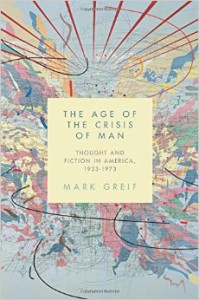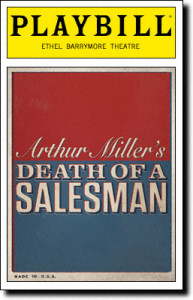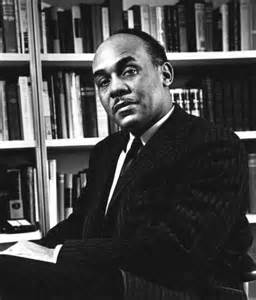This is the second of two excellent reviews on the recent Mark Greif book, The Age of the Crisis of Man: Thought and Fiction in America, 1933-1973. Read the other review by Professor Patrick Redding here.
Mark Greif, The Age of the Crisis of Man: Thought and Fiction in America, 1933-1973, (Princeton University Press, 2015) xii + 434 pages.
Review by Daniel Wickberg
Mark Greif’s The Age of the Crisis of Man is a big, ambitious book, as should be clear from the fact that it has been so widely reviewed, and almost everywhere positively. Unafraid to aim for large-scale synthetic claims as a way to characterize an Age or an Era, its title harkens back to an earlier “age” of historical scholarship, echoing titles like Schlesinger’s The Age of Jackson or Hofstadter’s The Age of Reform. All around us, from The History Manifesto to Age of Fracture, we hear the call to “go big,” to reject what Katherine Lofton has called “the pointillist profusions” that have dominated scholarship in the humanities since the 1970s, and to embrace a reinvigorated vision of the whole. In Greif’s case, the focus on a generalized “age” is echoed in the subject matter of the era he has chosen to study: a generalized idea of Man—abstract, universal, comprehensive. One part intellectual history, one part literary criticism, one part cultural critique, Greif’s study is to be applauded for aiming high, for speaking to some of the most compelling and enduring moral and philosophical issues of modernity, even if the work stumbles, lapses into critical posturing, and overreaches at times. It’s a welcome work that belongs on the bookshelf of anyone who is serious about understanding twentieth-century thought and culture.
The principal argument that Greif makes in this work begins with the contention that mid-century thought, across boundaries of discipline and up and down the cultural hierarchy, was animated by a common question: what is Man? The very abstractness of the category, the concern with a universalized personhood, rooted in Enlightenment conceptions, belongs, according to Greif, to a receding age, one whose concerns were  antithetical to both the early twentieth-century pragmatism and anti-formalism that preceded it, and the embrace of multiculturalism, difference, and pluralism that came to be dominant in the era from the 1970s to the present. The crisis of man discourse that sprang up in response to the intellectual, social, and technological conditions of twentieth-century modernity, the rise of totalitarianism, and the perception of human beings as pliable objects of manipulation, was developed in the 1930s and 40s—in the wake of Western economic and political collapse—and fully realized in the early 1950s, before becoming generalized, popularized, and collapsing in the 1960s and early 70s.
antithetical to both the early twentieth-century pragmatism and anti-formalism that preceded it, and the embrace of multiculturalism, difference, and pluralism that came to be dominant in the era from the 1970s to the present. The crisis of man discourse that sprang up in response to the intellectual, social, and technological conditions of twentieth-century modernity, the rise of totalitarianism, and the perception of human beings as pliable objects of manipulation, was developed in the 1930s and 40s—in the wake of Western economic and political collapse—and fully realized in the early 1950s, before becoming generalized, popularized, and collapsing in the 1960s and early 70s.
Unlike the image of the mid-century given us by Daniel Rodgers—full of institutional density, a conception of “society” so thick as to make the whole a stable and enduring sets of contexts for action—Greif’s image of mid-century thought is of an “empty” discourse, a set of generalized but unspecific elements. Both Rodgers and Greif find the mid-century dominated by a species of holism, but Rodgers’s whole is full, Greif’s empty. The concept of “Man” was a device for raising questions, but in its very universality, appears to have been a means of evading any concrete answers. What we get instead, according to Greif, is a discourse that presents the crisis of man in terms of four other abstractions: human nature, history, faith, and technology. The unwillingness of thinkers to grasp human beings and their plural conditions concretely pushed them both to ask very large questions, and to fail to provide satisfactory answers that would address the social, cultural, political, and intellectual conditions of twentieth-century modernity. Greif seems to be simultaneously nostalgic for, and dismissive of, the crisis of man discourse he explicates.
The form of The Age of the Crisis of Man is an interesting one: it consists of a center of literary criticism set within a frame of intellectual history. The middle of the book, which appears to be where Greif’s strongest interest lies, takes the form of close(ish) readings of the crisis of man discourse as it was manifested in Ralph Ellison’s Invisible Man, Saul Bellow’s Dangling Man, Flannery O’Connor’s stories collected in A Good Man is Hard to Find, and Thomas Pynchon’s V. and The Crying of Lot 49. These four authors and texts are made to represent the four categories of human nature, history, faith, and technology, respectively, in the crisis of man discourse. The first part of the book establishes the terms of the discourse and its manifestation in a number of writers, including Reinhold Niebuhr, Lewis Mumford, Karl Mannheim, Theodore Adorno and Max Horkheimer, Robert Maynard Hutchins, Hannah Arendt and others. The last section details the collapse and critique of the discourse under the pressure of the insurgent critiques of the 1960s. But the real interest, for Greif, lies in the extended analysis of individual works of fictions as the ground on which authors wrestled with the question of Man. His contention is that literary fiction writers “make a different kind of intellectual history” than philosophers, social thinkers, theologians, historians, and cultural critics. “Novelists have to test abstractions on the world.” (148-49) The commitment of the novel to concrete depiction, for Greif, means that it is privileged as a site in which the emptiness of philosophical discourse can be (and was) given content. “Since the fiction writers’ answers had to take stock of truths of American life that the abstract discourse did not—life as a Jew or an African American, life with an orthodox religious faith or hemmed in by pervasive technology—their accounts frequently undid the hopes of the original questions of man precisely on matters of “‘difference.’” (xii) I find this position problematic, particularly because it is asserted more than demonstrated, and its assertion in fact serves to justify the unusual form of the text. Leaving aside the question of the resolutely canonical nature of the texts and authors chosen, the idea that sociological texts like David Riesman’s The Lonely Crowd or documentary works like Agee and Evans’s Let Us Now Praise Famous Men, to take two examples that don’t appear in Greif’s account, are somehow less concrete than novels is puzzling. There are ways to integrate the works of fiction writers into intellectual history, but here Greif segregates the novel from the larger discourse of which it is a part, and the broader intellectual history is put into the role of supporting player or context for the privileged manifestation of ideas in the novel. Literary criticism is set, not only apart from, but against, the more compelling intellectual history. Discourse study looks to collective patterns and structures; analysis of individual authors and texts as privileged sites of a special kind of thinking points us in the opposite direction.
What makes the work a little frustrating as intellectual history is that it provides few clues for those trying to figure out the principle of inclusion and exclusion of various texts. That is, there seems to be a kind of arbitrariness about which texts are historically significant, so that works that would appear to be central to the discourse that is being analyzed here, either get mentioned only cursorily, or fail to appear at all. C. Wright Mills, for instance, despite the fact that his works, as Greif acknowledges, “are soaked in the discourse of man,” (265) gets a cameo of two sentences as a prelude to New Left critiques. The figure of the “cheerful robot” in Mills’s writing from White Collar through The Sociological Imagination is an echo of the Weberian themes of bureaucratic alienation central to critical social thought and its articulation of the condition of man. Arthur Miller doesn’t appear in the book, despite the fact that Death of a Salesman is probably the great middlebrow  expression of the crisis of man, and Miller’s own written commentary on Modern Man and tragedy present a somewhat different picture of the discourse than Greif gives us. No mention of two European imports I would think would be of some importance: Robert Musil’s A Man Without Qualities, and Victor Frankl’s Man’s Search for Meaning, the latter of which became the kitsch psychoanalytic version of the crisis of man discourse. John Dewey’s Freedom and Culture takes as its central problematic the crisis of man, but is not discussed nor cited. Erik Erikson, who gave modern culture the “identity crisis,” and whose thinking would appear to provide a set of alternative answers to the question of man is not even mentioned. And these are just some of the more obvious exclusions. All historians, of course, make choices of what to include and what to exclude. There may be a logic to Greif’s choices of which authors and texts to discuss, but that logic is not made explicit. The apparent arbitrariness of selection may lead some historians to conclude that factors such as aesthetic and personal likes and interests, rather than sound historical reasons, have shaped the interpretation in ways that may not be supportable; when one goes in search of an “empty” discourse, perhaps one finds it.
expression of the crisis of man, and Miller’s own written commentary on Modern Man and tragedy present a somewhat different picture of the discourse than Greif gives us. No mention of two European imports I would think would be of some importance: Robert Musil’s A Man Without Qualities, and Victor Frankl’s Man’s Search for Meaning, the latter of which became the kitsch psychoanalytic version of the crisis of man discourse. John Dewey’s Freedom and Culture takes as its central problematic the crisis of man, but is not discussed nor cited. Erik Erikson, who gave modern culture the “identity crisis,” and whose thinking would appear to provide a set of alternative answers to the question of man is not even mentioned. And these are just some of the more obvious exclusions. All historians, of course, make choices of what to include and what to exclude. There may be a logic to Greif’s choices of which authors and texts to discuss, but that logic is not made explicit. The apparent arbitrariness of selection may lead some historians to conclude that factors such as aesthetic and personal likes and interests, rather than sound historical reasons, have shaped the interpretation in ways that may not be supportable; when one goes in search of an “empty” discourse, perhaps one finds it.
One of the ways Greif’s work appears as a kind of throwback to an earlier set of assumptions and ambitions that are themselves contemporaneous with the mid-century discourse he examines, is in his treatment of feminist critique, which he sees as one of the concrete elements of 1960s/70s thought that laid to rest the crisis of man discourse. On the one hand, he treats feminist thought and its criticism of the category of Man as an historical event (265-69), one that helped produce the post-humanist thought of the late twentieth century. On the other, his own analysis of the mid-century discourse remains resolutely blind to the problem of gender as part of the discourse of man. This is most evident in his treatment of Ellison’s Invisible Man, a novel that aims to make visible the  subjective life of the unmarked intelligence in a world of objectification and visible marking. Yet for all its attempt to critique the blindness of American culture on matters of race, Ellison’s novel makes women invisible. Women appear as objects of sexual desire, as prostitutes, as nymphomaniacs, as mother figures, but are never recognized by the narrator or the author as centers of consciousness, as human beings. When the narrator is demoted by the Brotherhood–Ellison’s fictional stand in for the Communist Party–to a position of responsibility for “The Woman Question,” for instance, it’s clear that Ellison intends this demotion non-ironically, rather than as an opportunity for examining the marginalization of women in the discourse of man. Here is a novel that reproduces, in gender terms, everything that it subjects to critique in racial terms. But Greif has absolutely nothing to say about the gendered dimension of the anthropological concern with man in Ellison’s novel. I am not inclined, as an historian, to insist that gender is always and everywhere a central concern, but in a discussion of the category of Man, it would seem to have a centrality that demands attention.
subjective life of the unmarked intelligence in a world of objectification and visible marking. Yet for all its attempt to critique the blindness of American culture on matters of race, Ellison’s novel makes women invisible. Women appear as objects of sexual desire, as prostitutes, as nymphomaniacs, as mother figures, but are never recognized by the narrator or the author as centers of consciousness, as human beings. When the narrator is demoted by the Brotherhood–Ellison’s fictional stand in for the Communist Party–to a position of responsibility for “The Woman Question,” for instance, it’s clear that Ellison intends this demotion non-ironically, rather than as an opportunity for examining the marginalization of women in the discourse of man. Here is a novel that reproduces, in gender terms, everything that it subjects to critique in racial terms. But Greif has absolutely nothing to say about the gendered dimension of the anthropological concern with man in Ellison’s novel. I am not inclined, as an historian, to insist that gender is always and everywhere a central concern, but in a discussion of the category of Man, it would seem to have a centrality that demands attention.
Another peculiarity of Greif’s text is its treatment of human rights, which he situates in terms of the crisis of man discourse in the post-World War II world (79-90). This would initially appear to make sense, but the elephant in the room is Samuel Moyn’s The Last Utopia, which is uncited and unmentioned. Yet, Moyn’s argument would fundamentally challenge the periodization and claims of Greif’s book, and deserves serious consideration here. Moyn has argued that human rights appeared as a central moral category at the moment in the 1970s when the idea of rights was liberated from its dependence upon state forms; human rights became a cause at the moment of its greatest abstraction, whereas the immediate post-World War II movement to speak about Human Rights was, for Moyn, dead at its inception and never really understood as the meaningful basis of postwar reconstruction. It was only the collapse of the authority of state actors in the 1960s and 70s that created the modern concept of human rights. In other words, the very abstraction and universalization of humanity occurred, for Moyn, at the moment that Greif says abstraction and universal conceptions of man were called into question and a new post-humanist intellectual sensibility came into being. If I understand these two authors correctly, they can’t both be right. Many have disagreed with Moyn, of course, but his work is well known and significant enough that one would expect Greif at least to address it here.
My criticisms should not be taken as a dismissal of what I take to be an important work that is helping us to see patterns of thought in the mid-century decades in new ways. In fact, a book as challenging and thoughtful as this one is sure to provoke discussion, criticism, and disagreement—it already has. It is a measure of the success of Greif’s text that it forces us to rethink, or to think better about, a period of time that seems to so many observers today to speak to us in a language that is both alien and, in some ways, newly compelling. Greif’s ambivalence about that era—admiring of its big questions, resolutely opposed to its bloated banalities—can perhaps serve as a marker for our current intellectual condition.
Daniel Wickberg is Associate Professor of Historical Studies and the History of Ideas  at the University of Texas at Dallas, and the 2014-15 President of the Society for U.S. Intellectual History. His research interests center on conceptions of self and society from the eighteenth century through the twentieth century, and he is currently writing a book entitled The Idea of Tradition in a Culture of Progress: Post World War II American Thought. His essays have appeared in the American Historical Review, Critical Inquiry, the Journal of American History, and Modern Intellectual History, among other venues.
at the University of Texas at Dallas, and the 2014-15 President of the Society for U.S. Intellectual History. His research interests center on conceptions of self and society from the eighteenth century through the twentieth century, and he is currently writing a book entitled The Idea of Tradition in a Culture of Progress: Post World War II American Thought. His essays have appeared in the American Historical Review, Critical Inquiry, the Journal of American History, and Modern Intellectual History, among other venues.

2 Thoughts on this Post
S-USIH Comment Policy
We ask that those who participate in the discussions generated in the Comments section do so with the same decorum as they would in any other academic setting or context. Since the USIH bloggers write under our real names, we would prefer that our commenters also identify themselves by their real name. As our primary goal is to stimulate and engage in fruitful and productive discussion, ad hominem attacks (personal or professional), unnecessary insults, and/or mean-spiritedness have no place in the USIH Blog’s Comments section. Therefore, we reserve the right to remove any comments that contain any of the above and/or are not intended to further the discussion of the topic of the post. We welcome suggestions for corrections to any of our posts. As the official blog of the Society of US Intellectual History, we hope to foster a diverse community of scholars and readers who engage with one another in discussions of US intellectual history, broadly understood.
Professor Wickberg,
I’m wondering what you thought of his analysis of the “discourse’s domestication” by the 1960s (“Through the 1950s and into the early 1960s, forms of jeopardy to man, which seemed ultimately to come from outside the United Sates or the West . . . radically changed character whenever they newly came to seem particularly the products of the United States or the West” (257)? Is his use of Marcuse’s One-Dimensional Man and Arendt’s The Human Condition adding a new twist on conceptualizations of post-WWII thought, or is this a fairly standard utilization of those books?
When I read this for a class book review this semester, my first prediction was that a study of “Man” and the plasticity of “human nature” would take into account the various psychological, biological, and/or socio-biological texts of those years (maybe Watson/Crick or Allport?), even though Greif acknowledges that “[h]uman nature, in this particular discourse, is not really about physiology or evolution” (11). I might dispute that last point. . . . I say this because his categorization of Hemingway’s The Old Man and the Sea as“the discourse of man at its most reduced: old man faces nature, old man will endure” (122) seems jarring without the historiography of Darwinism, American psychology, etc.
Am I being unfair??
Mark–
These are god questions. I’m sending you an email directly about this.